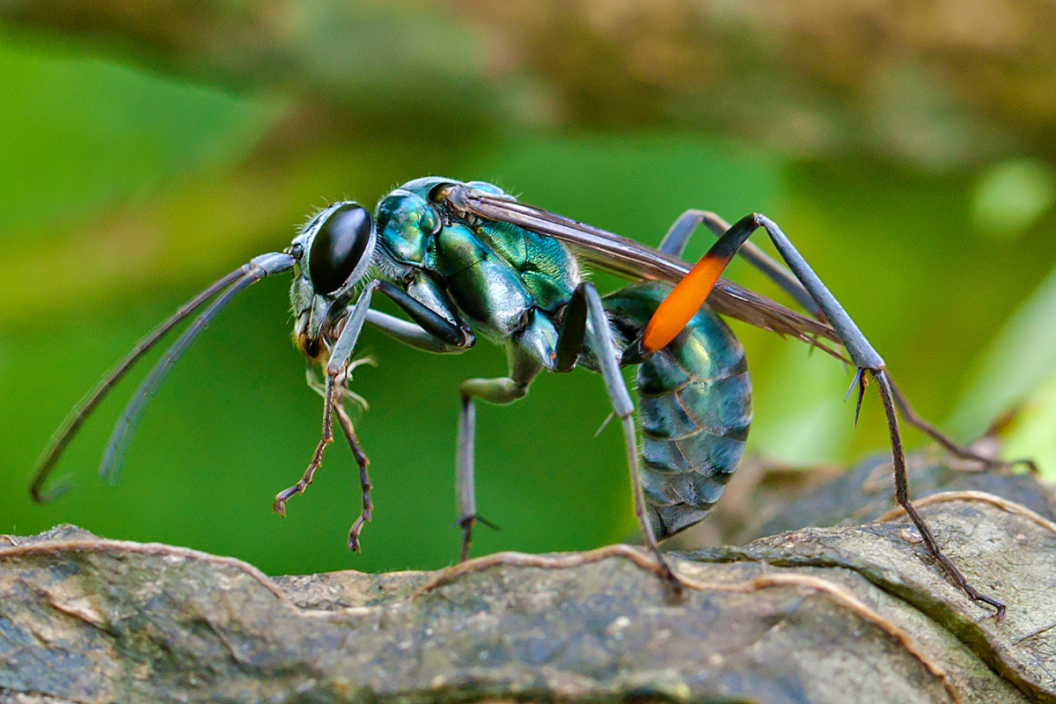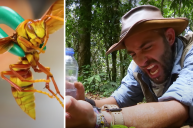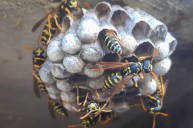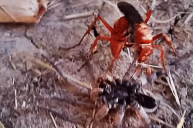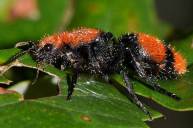The Tarantula Hawk carries one of the two most painful stings in the world alongside the Bullet Ant. Let's take a look at why this is.
Pepsis, or more commonly known as the Tarantula Hawk, is a type of spider wasp that preys on and eats tarantulas. (Hence the name!) The Tarantula Hawk Wasp is the largest species of wasps with the more common species of Tarantula Hawks being up to 2 inches long!
The Tarantula Hawk is considered to carry one of the world's most painful stings from an insect — the wasp stings are described as "immediate, excruciating, unrelenting pain that simply shuts down one's ability to do anything, except scream." (Oh gosh, it seriously makes us shudder just thinking about it!) The pain from this stinger ranks at 4 on the 'Schmidt Sting Pain Index', a 4-point system to measure pain levels from Hymenoptera: an order of insects that include wasps, bees, and ants. It was created by famed entomologist, Justin Schmidt.
These invertebrates have blue-black bodies along with bright orange wings and long legs, which they use to grapple their prey. Tarantula Hawks are found in Central and South America, as well as Southern United States.
The Sting of the Tarantula Hawk Wasp
While Tarantula Hawks are generally pretty docile and avoid people, they will sting if they feel it's necessary to defend in which their paralyzing sting comes in useful for them. These large wasps also use their potent sting to feed their young.
Fun fact: although all adult Tarantula Hawks get their nutrition from feeding on nectar, only female Tarantula Hawks will prey on tarantulas to feed their offspring — a bit different from male Tarantula Hawks.
It really is quite an interesting (but very gruesome!) process: females first use their sting to paralyze the spider before dragging the paralyzed tarantula to the wasp's nest. A single egg is then laid on the spider's body, then the egg hatches into a larva and burrows itself into the spider's abdomen, eating the still-living insect. These larvae will eventually emerge from the spider's carcass as adult Tarantula Hawks.
Now, there's one thing we do know: you do not, and we repeat — you DO NOT, want to be stung by one of these very large wasps. As Schmidt puts it,
"Stung by a Tarantula Hawk? The advice I give in speaking engagements is to lie down and scream."
The good news? This excruciating, intense pain is short-lived — it only lasts for about 5 minutes. (Even though, that 5-minutes could feel like an eternity!)
Do you know about the Tarantula Hawk Wasp? Have you seen one? Let us know on the Wide Open Pets Facebook page!
